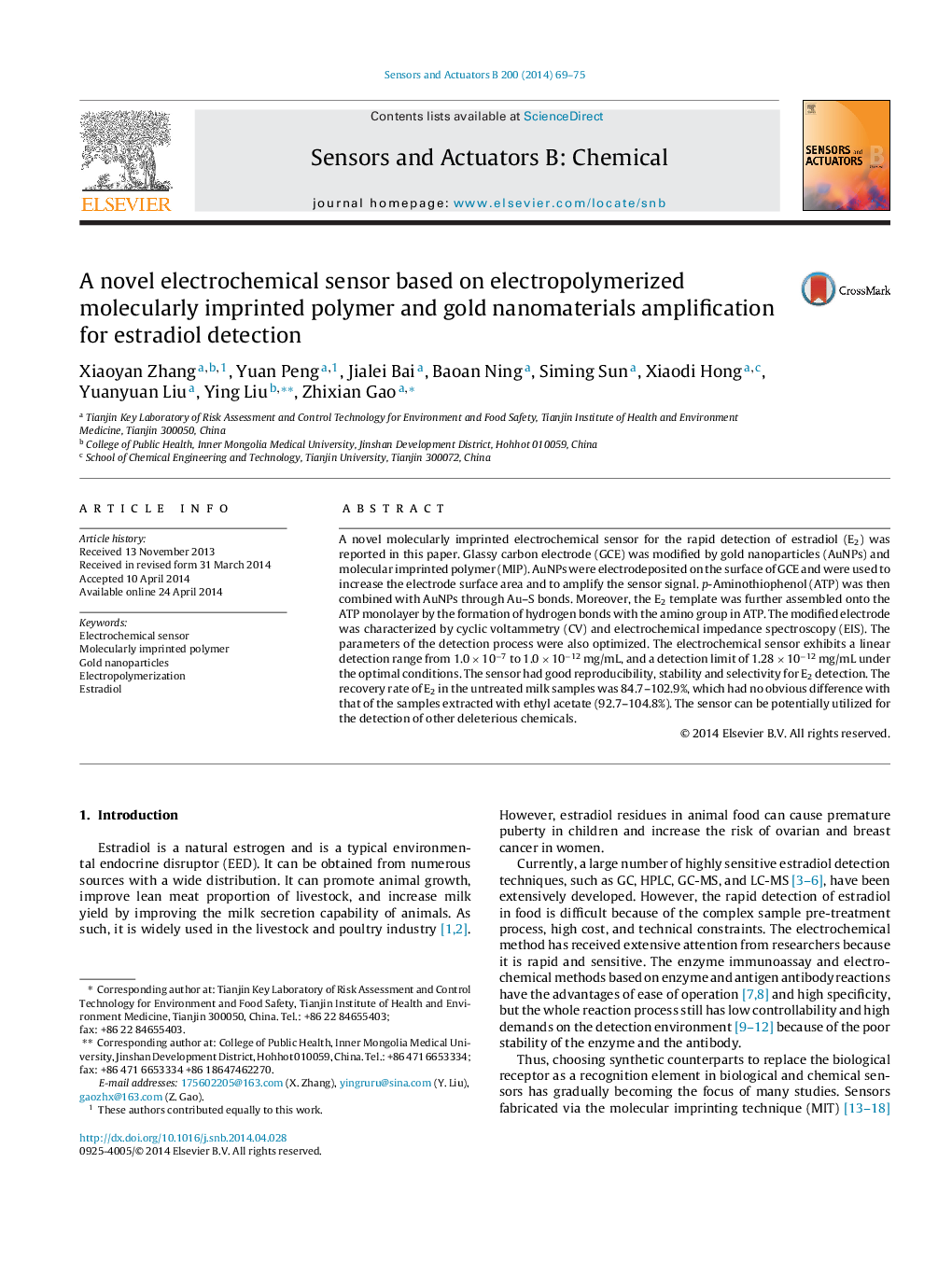| Article ID | Journal | Published Year | Pages | File Type |
|---|---|---|---|---|
| 739969 | Sensors and Actuators B: Chemical | 2014 | 7 Pages |
•A lower detection limit is showed in this study.•AuNPs deposition extends the measurement range of the sensor.•The imprinted sensor exhibits good selectivity, stability, and reproducibility.•The developed sensor was applied to milk samples without any further treatment.
A novel molecularly imprinted electrochemical sensor for the rapid detection of estradiol (E2) was reported in this paper. Glassy carbon electrode (GCE) was modified by gold nanoparticles (AuNPs) and molecular imprinted polymer (MIP). AuNPs were electrodeposited on the surface of GCE and were used to increase the electrode surface area and to amplify the sensor signal. p-Aminothiophenol (ATP) was then combined with AuNPs through Au–S bonds. Moreover, the E2 template was further assembled onto the ATP monolayer by the formation of hydrogen bonds with the amino group in ATP. The modified electrode was characterized by cyclic voltammetry (CV) and electrochemical impedance spectroscopy (EIS). The parameters of the detection process were also optimized. The electrochemical sensor exhibits a linear detection range from 1.0 × 10−7 to 1.0 × 10−12 mg/mL, and a detection limit of 1.28 × 10−12 mg/mL under the optimal conditions. The sensor had good reproducibility, stability and selectivity for E2 detection. The recovery rate of E2 in the untreated milk samples was 84.7–102.9%, which had no obvious difference with that of the samples extracted with ethyl acetate (92.7–104.8%). The sensor can be potentially utilized for the detection of other deleterious chemicals.
